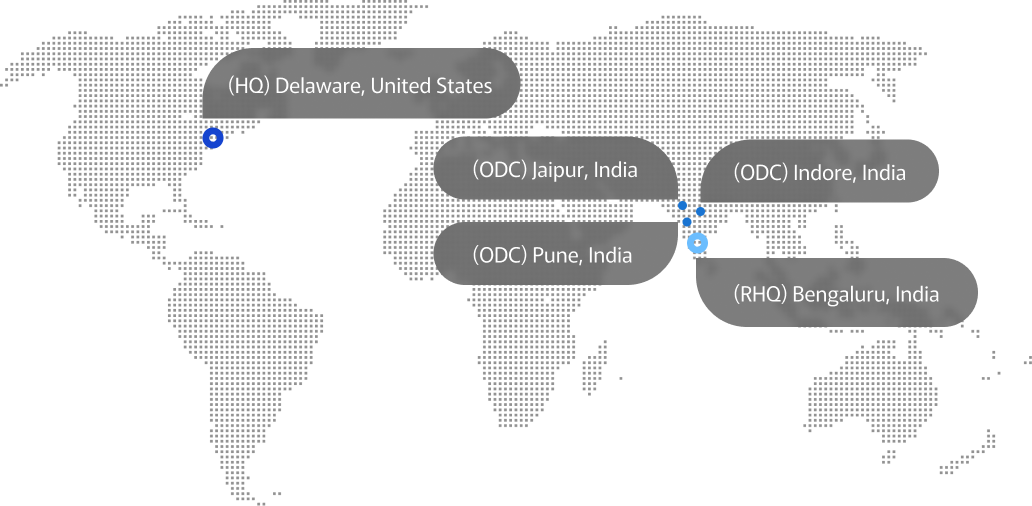
- SAP FLM
Mastering SAP File Lifecycle Management for Business Success
Table Of Content
- Understanding SAP File Lifecycle Management
- Key Components of SAP File Lifecycle Management (FLM)
- Benefits of SAP File Lifecycle Management
- In The End
Understanding SAP File Lifecycle Management
SAP File Lifecycle Management (FLM) is a software solution designed to enhance file and document management in business. Before, companies used hardcopy documents which led to inefficiency and complexity. SAP FLM opens a way for digital processes through which users can create, store, approve, and track files easily. This development helps with organization, simplifies access to information, and supports process optimization.
Through SAP FLM, one can handle a variety of document formats that include general files, incoming mail, and outgoing correspondences. The system brings about automated workflows that help users outline approval procedures and delegate tasks to specified individuals. By so doing the automation ensures timely review and processing of files by the right persons thus increasing efficiency and productivity within the company.
Key Components of SAP File Lifecycle Management (FLM)
File Creation in SAP FLM
File creation is the beginning of SAP File Lifecycle Management (FLM). This stage involves collecting and storing files systematically. Users can create documents directly on the software or import them from elsewhere, depending on whether they are using SAP FLM. This is characterized by the proper classification, indexing, and tagging of files with relevant metadata for ease of retrieval, one of the basic tenets of File Lifecycle Management SAP.
File Storage in FLM in SAP
SAP File Lifecycle Management offers a robust and scalable file storage solution once files are created. It encompasses diverse storage locations such as on-premises servers and cloud-based ones combining the two to suit organizational requirements as well as budget constraints respectively. Thus, it is this adaptability in selecting storage options that renders SAP FLM be most preferred among organizations desiring efficient storage techniques that fit their demands.
File Retrieval with SAP FLM
Another outstanding characteristic of [SAP File Lifecycle Management] is its speedier document extraction functionality. Such a system has enhanced search capabilities through which users can get hold of documents based on different attributes such as file names, metadata or content. In addition, users can quickly reach important information enhancing productivity within organizations
File Archival through SAP FLM
Over time, some files may no longer be useful or may not be accessed frequently, so SAP FLM offers a better way of dealing with such situations. Moreover, the process of moving files into an archive aims to free up space and ensure that only those files that are currently being used can be easily retrieved. SAP File Lifecycle Management Some files are automatically selected for archiving by this automated program that is common in all installations that comply with the standardized regulations on its application.
Benefits of SAP File Lifecycle Management
Implementing SAP FLM can bring numerous benefits to your business. Let’s explore some of them:
Enhanced Financial Management Capabilities
Adopting SAP File Lifecycle Management can significantly elevate an organization’s control over its financial processes. By melding file management capabilities with financial modules, SAP FLM, or File Lifecycle Management SAP, facilitates more efficient handling of invoices, meticulous tracking of payments, and enhanced accuracy in financial reporting.
This integration streamlines financial workflows, diminishes the potential for errors, and fortifies overall financial management protocols, positioning SAP FLM as a critical tool for financial oversight.
Streamlined Asset Lifecycle Management
In sectors where assets are pivotal, the management of their lifecycle stands as a fundamental task. SAP FLM, recognized also as Flm in SAP, extends its utility by integrating smoothly with asset management systems.
This integration allows for the meticulous tracking and management of files pertinent to assets over their entire lifecycle. With SAP File Lifecycle Management, every crucial piece of documentation, from maintenance logs to warranty information, is effortlessly accessible. This accessibility leads to enhanced asset efficiency and a notable reduction in operational downtimes.
Optimized Maintenance Planning and Execution
For industries dependent on machinery and equipment, the optimization of maintenance planning and execution is indispensable. SAP File Lifecycle Management aids organizations in refining their maintenance workflows by ensuring immediate access to essential documents like maintenance manuals, service histories, and related files.
The prompt availability of this information via SAP FLM ensures that maintenance tasks are conducted timely, thereby minimizing equipment downtime and boosting asset utility. This aspect of SAP FLM proves invaluable for maintaining operational continuity and maximizing the performance of physical assets.
Integrated Business Processes
File Lifecycle Management (FLM) of SAP seamlessly works together with other SAP modules such as ERP and CRM thus enabling the streamlining of business operations. This integration enables files appropriate to certain business activities to be accessed immediately hence enhancing working together and decision-making efforts.
For example, thanks to SAP FLM or FLM in SAP, salespeople can get customer contracts or proposals from the CRM system quickly which leads to improved customer service delivery and sales efficiency. This aspect of File Lifecycle Management SAP highlights that it is able to improve interdepartmental coordination and process effectiveness.
Real-time Visibility and Analytics
SAP File Lifecycle Management provides real-time insight into file-related information enabling organizations to make timely informed decisions. The system incorporates powerful analytics tools for identifying trends, patterns and anomalies in file use, access or storage behaviours.
Based on this information, organizations can fine-tune their records management practices, allocate resources more appropriately, and identify potential risks or compliance gaps thereby proving that SAP FLM has great strengths in promoting transparent operations as well as analytical ability.
Enhanced Decision-making and Strategic Planning
SAP File Lifecycle Management gives an overall view of the files and other documents in an organization which ensures a better decision-making process and also strategic planning. [SAP FLM] enables companies to identify optimization opportunities, streamline business procedures, and foster innovation by providing a detailed understanding of file usage/access patterns and various stages of the file lifecycle.
This is where SAP FLM or File Lifecycle Management SAP comes in handy as it helps firms to transit through intricate commercial environments by ensuring that they are superiorly positioned over their rivals for uninterrupted expansion.
In The End
Today, businesses that dream of remaining ahead in the rapidly changing digital world must have command over SAP File Lifecycle Management. This can help organizations improve financial management capabilities, integrate business processes, streamline File lifecycle management, gain real-time analytics, optimize maintenance planning and execution, and make informed decisions for strategic planning. Get started with SAP FLM, and exploit your business’s full potential!





